The Man Who Drove
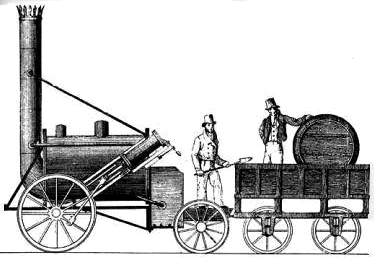
Prologue
All the
contemporary accounts state that an engineer named Joseph Locke was the first
man to drive Stephenson's Rocket and there is no reason to doubt that they are
all correct; Locke was undoubtedly the perfect choice for the role of leading
engineer in an occupation that was new to everyone. Born in Barnsley,
Locke began work at the age of 13 carrying out various menial duties for a local
surveyor, later progressing to working in his father's colliery as a
clerk where he might have spent the rest of his days but for a chance visit by
George Stephenson who offered him work in the Forth Foundry on Tyneside.
it was at the Forth Foundry that Locke's latent abilities began to flourish and
he quickly graduated into a first-class engineer and surveyor, working more and
more often alongside both George and Robert Stephenson and shouldering greater responsibilities in the
process. When the Rocket ran away with the Rainhill Trials and the
Liverpool to Manchester railway was sanctioned. Locke was given the task of
completing the first 10 miles of track which included the Wapping and the Olive
Mount Tunnels which turned out to be a major triumph for his skills and
reputation. Locke was
25 years of age when he was chosen for the prestigious task of driving the
Rocket ---- the best among a tiny coterie of engineers capable of handling
the stupendous speeds of the locomotives.
Seventy years into the future, long after the railways were still a novelty and
flying in the face of all the documented evidence, an octogenarian in Iowa was
famous for telling anyone who would listen that he was the first man to drive
the Rocket. Most people put it down to a faulty memory but the old man
hadn't always lived in Iowa and Joseph Locke hadn't always driven the Rocket.
-----------------------------------------------------------------------
There
are times when a cruel and capricious fate brings together seemingly unrelated
elements for no reason whatsoever -------- the results are often catastrophic.
William Huskisson's well-publicized feud with the Duke of Wellington which
dragged on for years; Huskisson's constant and unerring ability to place himself
in harm's way; the idiosyncratic design feature which ensured there was a
braking system to each carriage and none whatsoever fitted to the locomotives;
and finally, the carriage door designed to swing outwards ------- all of these
things, so apparently disparate at the time, when looked at in retrospect were
the proverbial accident-waiting-to-happen.
Alternatively, inspected from a far darker and less prosaic point of view, it
could be said that the as-yet-unnamed Gods of the Railway demanded a blood
sacrifice and their victim was to be one of its High Priests.
---------------------------------------------------------------------
Trials
and Tribulations.
The Rainhill Trials
was the catalyst which sparked the beginnings of the railways. When
Stephenson's Rocket came in first past the winning post in the competition of
1829 at the breat htaking speed of 35 miles per hour { the House of Commons had
bargained that 10 mph might be reached } the floodgates opened and all the
latent ideas and ambitions that had been fermenting for many years came pouring
out and engineers and entrepreneurs everywhere were galvanized into an energetic
race to build the first rail system. William Huskisson was one of the prime
movers energized by the feats of the Rocket ----- the engine was a proven
winner and the next step was to build the track.
htaking speed of 35 miles per hour { the House of Commons had
bargained that 10 mph might be reached } the floodgates opened and all the
latent ideas and ambitions that had been fermenting for many years came pouring
out and engineers and entrepreneurs everywhere were galvanized into an energetic
race to build the first rail system. William Huskisson was one of the prime
movers energized by the feats of the Rocket ----- the engine was a proven
winner and the next step was to build the track.
The track itself was nothing new ---- a small-scale track had been laid in
Sheffield as early as 1776 and subsequently destroyed by the colliers who saw it
as a threat to their jobs. The Coalbrookdale Foundry in Shropshire
followed suit ten years later, and in 1825, George Stephenson himself had
supervised the laying of a track between Stockton and Darlington.
Like all evolutionary processes, the rudimentary tracks served as experiments
for the finished product but the preceding tracks were miniscule compared to the
projected works anticipated by the Liverpool to Manchester line.
The laying of the track was in itself a major engineering feat given that the
surveyors were forced to make their work as clandestine as possible. They were
stoned and abused by canal workers, miners, farmers and virtually everyone who
had { or thought they had } reason to fear the new technology and forced to work through
the night by the light of lamps guarded by hired hard men. The
"navigators" who followed the designated lines were too tough and too
many to be bothered by agitators and hewed through solid sandstone, dug
out peat moss, built bridges and sometimes glanced back at the iron rail snaking
along in their wake ------ working like a "navvy" was an expression
hard-earned.
Despite the difficulties, the following year saw the patrons of the rail system gathered together to
celebrate the completion of the track and on the 14th June, 1830, Charles
Lawrence { a future Lord Mayor } of nearby Wavertree Hall, John Moss, Joseph
Sandars, Robert Gladstone, Henry Booth , Hardman Earle and several others who had
placed their faith in the new technology, came together to celebrate the laying
of the metal
lines between Manchester and Liverpool, totalling thirty-two and three -quarter
miles in length. They then made a trial run to Manchester and back and
returned confident in the success of their venture
The celebration of the track- laying was a prelude to the true celebrations
when the Grand Opening of the first passenger railway in the world was planned
for Wednesday, the 15th September, 1830, which would be a colourful day of
flag-waving and bands playing in a well organized and well-publicized jamboree
designed to give the project a flying start. While the invention of the
steam-engine was revolutionary and the laying of the metal rails was an
unprecedented novelty, the construction of the Moorish Arch was equally
breathtaking and a tribute to the industry and engineering skills that had chiselled through the
bedrock for miles. Taken in conjunction, the elements that came
together on that day formed a truly Empirical { in every sense of the word }
celebration of the Industrial Revolution which was taking place in the heart of
Liverpool.
The day began brightly enough at Crown St. where in the early morning the engines
awaited their passengers for the downhill run to Edge Hill. There were to be two sets of trains and
carriages running parallel to each other ----on one line were the Directors of the
Railway and other distinguished guests including Sir Robert Peel, Charles
Babbage, Prince
Esterhazy, M.P's, Lord Mayors, Counts and Countesses, the V.I.P list
was endless and they were all headed by the celebrated hero of Waterloo, the Prime
Minister, the Duke of Wellington. The
Duke was slightly ominously clad in mourning clothes which were hidden by a
swirling, black cloak. The Duke's entourage was to consist of three
carriages; the first carriage carried the band and the second
carriage was for the Duke of Wellington and 40 guests
including Huskisson and
his wife, Emily who had both stayed overnight as the guests of Charles Lawrence
in Wavertree Hall. The Directors and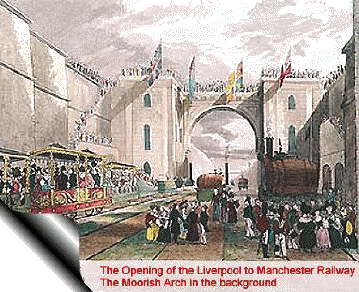 other VIP's
were in
the third carriage---- all of which was to be hauled by a single
locomotive, the Northumbrian, driven by George
Stephenson himself. The Duke's carriage was a grand affair;
other VIP's
were in
the third carriage---- all of which was to be hauled by a single
locomotive, the Northumbrian, driven by George
Stephenson himself. The Duke's carriage was a grand affair;
"superbly
ornamented with Grecian scrolls, a gilt balustrade, a huge ottoman and a
handrail surrounding the whole carriage. A 25ft. canopy covers the
carriage so contrived to be lowered for through through the tunnels."
On the opposite track, there was a different arrangement altogether with six
carriages containing no less than 700 people necessitating a whole convoy of
steam-engines to move them. The Phoenix was
driven by Robert Stephenson { the son of George Stephenson }, the North
Star by another Robert Stephenson { George Stephenson's brother }, the Dart by
Thomas Gooch, the Comet by William Allcard,
the Meteor by Anthony Harding, the Arrow
by Frederick Swanwick and of course the Rocket driven
by Joseph Locke. The Rocket was immediately distinguishable, painted in a
vivid, bright yellow.
The arrangements were such that the trains would travel parallel to each other
on opposite tracks so that the Directors and the Duke could comfortably see the
quality and power of the passenger trains. There were to be occasional
stops for refreshment and the trains would "pass
and
re-pass carriages" in order to fully appreciate the workings of the
system and the power of the locomotives.
When everything was ready and all passengers were aboard, Henry Booth lent his
pistol to an official which was fired into the air giving the signal for a
cannon to be fired and the whole procession moved forward on its historic run.
The cannon had inadvertently fired low and the cladding taken out the eye of a
bystander but few in the throng of thousands gathered to watch the proceedings noticed in all the excitement.
Reporters from The Liverpool Albion, reporting the event which came into print
on the 20th of September, 1830, were ecstatic and visualised the event in terms
that were recognizable to themselves and the general public;
"As the jockeys by their horses before the race so were the engineers
exercising their engines
along the line- now running forwards and now running backwards. It was
a most astonishing
display of human power to behold a mere boy stationed on one of the so
beautiful machines
making a rush forward at the rate of 30 miles in the hour and then by merely
touching a piece
of machinery, checking its velocity and turning it back with as much, nay
with more ease than
he could hold back a well-trained horse."
Apart
from the clear indication that the writer hasn't the slightest inkling of the
workings of a steam-engine, the discerning reader may have noted the
phrase
" a mere boy stationed on one of the so beautiful
machines" and perhaps raised an eyebrow and put it down to the
exuberance of the columnist. But the fact was that none of the previously
named drivers could be described as a "mere boy" and certainly not the
driver of the Rocket, Joseph Locke.
As the day wore on, the carriages pulling the distinguished guests halted at
Parkside to allow the Northumbrian to take on water and along with several
others William Huskisson alighted for a rest. Even an experienced
politician such as Huskisson must, as anyone of any sensitivity would, have been
upset by his long-standing schism with the Duke of Wellington ----the man was a
after all a living legend and would command respect whether he was right or
wrong. Nobody will ever know whether Huskisson planned to make his peace
with the great man or did it on the spur of the moment but whichever was the
case, in that moment all those seemingly random elements of s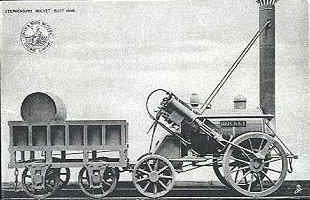 ome cruel plan came together to
claim the life of William Huskisson.
ome cruel plan came together to
claim the life of William Huskisson.
The Duke of Wellington was virtually alone when Huskisson made his fateful
decision to approach the great man in his carriage and he was evidently pleased
with the result when the pair were seen shaking hands, with the Duke leaning
over to Huskisson who was still outside the train along with several others.
The "pass and re-pass policy" of the trains had been carried out as
instructed and was still in place while the Northumbrian was taking on water and
in the days when passengers and public wandered around railway tracks unhindered,
the drivers expected people to get out of the way of the locomotives. When
a shout went up that an engine was approaching everyone on the track scattered
and found safety wherever they thought fit. Most of the passengers
regained their carriages leaving only Huskisson and William Holmes on the track
with a convoy of engines heading towards them with
the Rocket in the lead. Joseph Locke saw the two men and immediately threw
the gear lever into reverse, the only method of stopping the train and one which
took many valuable seconds. The gap between the two engines when they
passed was 2 foot and Holmes leapt on the side of the carriage exhorting
Huskisson to follow suit which he did. With the two men pressed against
the carriage and the Rocket slowing down, there was no doubt that they would
have both emerged safely from the ordeal, shaken but still safe ----but
Huskisson made a final decision which sealed his fate. Struggling
desperately to obtain a better grip he took hold of the door handle and like a
scene from his worst nightmare, the door swung slowly outwards and placed
Huskisson directly into the path of the oncoming locomotive.
The train ran over Huskisson's thigh and leg causing horrific damage which was
reported in graphic detail by anyone who witnessed it and what had a few seconds
before been a relaxed and pleasant interlude was at a stroke now a place of
chaos and confusion. It soon became clear that poor Huskisson would have
to be taken to a place where his wounds could be treated and with Joseph Locke
in a state of shock, George Stephenson took the controls of the rocket in order
to transport the stricken man to Manchester. At speeds reaching an
unprecedented 35 miles per hour Stephenson transported Huskisson to Eccles vicarage where he died the same evening----the first man to die under the wheels of a train.
It was decided that it would be expedient to continue the journey to Manchester
and the Phoenix and the North Star were hooked up to the three carriages
allowing the now subdued convoy to move on to Manchester.
Many of the observers to the dreadful accident recorded their observations and
Lady Frances Sandon later wrote to a friend that "to
her mind the Director of the Carriage { the driver
} might not have gone at such a pace where the crowd was so great around the
carriages"- she may have had a point.
Then as now, the
letter pages of newspapers were full of correspondents who could always cast
light into the darkness of our ignorance and TM wrote to the Liverpool Albion in
no uncertain terms that train doors should swing inwards instead of
outwards. None of which could bring back William Huskisson but the one
report that lingers was the Observer's harrowing description of Emily
Huskisson's reaction;
"Mrs Huskisson uttered a shriek of agony which none
who heard it will ever forget."
The Liverpool Albion reported the
accident in a later editorial ;
"White, the engineer of the Rocket saw the unfortunate gentleman { Mr. Huskisson
} as the
engine approached in a position of the most imminent danger and he immediately
threw
the machine aback but its train moved onwards several yards by its impetus
before the
operation of stopping it could be performed."
Readers
of the Albion's account of the accident may have noticed another anomaly on the
very first line where the driver of the Rocket was now said to be an engineer
named White, a man whose name is not among any of the original drivers who
set off that morning. Those readers who did notice the variances in the
otherwise reliable reporting of the incidents probably made little of such
trivialities and returned to their daily lives.
The day that had dawned so brightly for the new rail system ended in tragedy but
the age of steam already had an impetus that was unstoppable and from that day
onward the railway grew at a prodigious rate---- the line still opened on the
following day, carrying130 passengers and taking 1 hour and 48 minutes each
way. William Huskisson as a martyr of the Industrial Age was given a
hero's funeral and the opening of the first passenger line in the world passed into
history. And that's how it would have stayed but for a hand-written
scrapbook and an old man in Iowa;
The Story in
the Scrapbook
The opening paragraph of the scrapbook baldly stated that;
" The driver of the first passenger train in England was a youth called
Edward Entwistle who was born at Tyldesley Banks near Wigan in 1815."
which was
intriguing enough but it it then went on to fill in the gaps and according to
the faded document ;
The young boy with the fine old Lancashire name of Edward Entwistle had begun work
at the age of 11 as an apprentice in the machine shops of the Bridgewater Trust
in Manchester where the Rocket was in process of being built under the direction
of George Stephenson. Stephenson was looking for a driver for the Rocket
and Entwistle was recommended to him by his foreman. On the Sunday
preceding the opening of the railway, Stephenson and Entwistle boarded the
Rocket and spent the day up and down the line teaching the apprentice to drive
the engine after which Entwistle accompanied Stephenson and the other drivers
when the opening ceremony took place on the Wednesday of the 15th
September. All the indications are that the several engineers took turns
at driving the Rocket which now makes sense of the anomalies in the Liverpool
Albion's reports. Entwistle was fortunate that he was not the one on the
footplate when the accident to Huskisson took place and the scrapbook stated that "it
was Entwistle's hand on the throttle for the whole of the return journey from
Manchester to Liverpool."
The line opened for business on the following day and incredible for one so
young and fulfilling every schoolboy's dream for centuries to come, Edward Entwistle was at the
throttle for each leg of the journey and it remained that way for the following
two years. Two round trips per day, every day of the week, with an
increasing number of passengers, Edward Entwistle drove the Rocket for two whole
years. He may have remained driving trains for the rest of his life but
the strain became too
m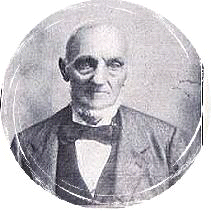 uch for the young lad and he lost his nerve.
Stephenson stepped in at this stage and ensured that Entwistle was found a new
placing as Second Engineer on one his firm's coastal steamers where the young man
finished his 7 year apprenticeship and recovered his health.
uch for the young lad and he lost his nerve.
Stephenson stepped in at this stage and ensured that Entwistle was found a new
placing as Second Engineer on one his firm's coastal steamers where the young man
finished his 7 year apprenticeship and recovered his health.
At the age of 22, Entwistle emigrated to America and secured work at a dollar a
day on a steamer called the Troy
plying its trade along the Hudson River to Long
Island Sound. When the Troy was condemned as unseaworthy, Entwistle was
given permission to remove the engines which he set up ashore as rolling mills.
In 1844, Entwistle travelled to Chicago and for the following 12 years found
work ashore in charge of stationery engines. He returned to the water in
conjunction with a partner named Perrier and ran a ship named the Rossile, one
of the first propellor driven steamers on the Great Lakes.
From Chicago, Entwistle moved on to his final destination spending 33 years
looking after and maintaining the engines of barge mills ----- one of them was
Ankery Mills where he stayed for 21 years.
At the age of 74 { which was quite an age in those days } Entwistle retired to a
farm he had purchased 40 years earlier and at the age of 81 he personally
supervised and worked on the new farm buildings.
Although Entwistle had lived a long and productive life, in his latter days, his
greatest pride was in relating the days when he drove the Rocket and
"Having been
the first man to drive a passenger engine and so inaugurate a method of
locomotion which revolutionised the world."
The
Origin of the Story
The story of Edward Entwistle first came to light in an article written by Frank
Hird for Lancashire Stories, circa late 1800's and
published by J.C. and E.C. Jack and was read with interest by Charles R.
Hand. Hand was so taken with the story that he contacted the author of the
article who happened to be with the British Expeditionary Force in France at the
time. Nevertheless, Frank Hird informed Hand of the following ;
"I found the facts concerning Edward Entwistle in an interesting collection of
scrap -books dealing with Lancashire which I obtained from the Manchester
bookseller Cross ----a collection made by a well-known Manchester architect who
was a member of the local Literary Society. I remember being vastly struck
by the story of Entwistle in the scrapbook and its difference from the story
usually told as to the actual driver of the first passenger train."
Whether the story is true or not
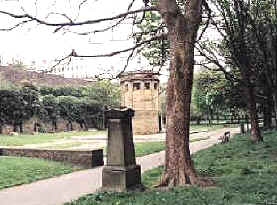 is
open to conjecture and although there are anomalies in the Albion's account it
is true to say that there is also one in the Entwistle story ----the Rocket was
not built in the foundries of the Bridgewater Trust but in Stephenson's
workshops in Newcastle-on-Tyne. However, the writer is obviously not a
professional historian so that doesn't mean to say that the whole thing is a
fabrication ---in fact there would seem to be little point in constructing such
an elaborate falsehood which was not written for publication anyway.
is
open to conjecture and although there are anomalies in the Albion's account it
is true to say that there is also one in the Entwistle story ----the Rocket was
not built in the foundries of the Bridgewater Trust but in Stephenson's
workshops in Newcastle-on-Tyne. However, the writer is obviously not a
professional historian so that doesn't mean to say that the whole thing is a
fabrication ---in fact there would seem to be little point in constructing such
an elaborate falsehood which was not written for publication anyway.
History is full of forgotten heroes and villains and
revisionism is turning into a cottage industry but there's something which rings
true about the story of Edward
Entwistle. If he was indeed the original
driver of Stephenson's Rocket
then he was undoubtedly an unsung hero of the dawning Age of Steam and his story
adds to the already rich romance of the railways.
When locomotives were an innovation drivers were few and far between and
Stephenson would have been anxious to ensure that he had enough drivers for the
procession on the Grand Opening which may explain his tutoring of the 15 year
old Entwistle on the preceding Wednesday. Perhaps he saw the lad as a
driver in reserve or perhaps he had some special aptitude.
Another possible scenario is that Edward Entwistle did play some part in driving
the numerous locomotives which populated the line in the years following the
inauguration ceremony and at some stage drove the Rocket. He would perhaps
have only realised in later life just what a momentous era in history he had
been involved in and embellished his role in the proceedings.
Whatever is true or not true, it never seemed to occur to Entwistle that he
should have been everlastingly grateful that he wasn't driving the Rocket when
it hurtled down on William Huskisson.
Postscript
Carriages to the Crown St terminus were hauled from Edge Hill by cable and
returned by gravity. On the day of the Grand Opening, when the passengers
were all safely in their carriages the brakes were released and they ran through
a 300 yard tunnel where the locomotives were waiting to be linked up.
Lime St station opened in 1836 and took the place
of the Crown St terminal.
The fabled Moorish Arch was demolished in the 1860's, joining the long
litany of
Liverpool architectural heritage consigned to the scrap-heap. Liverpool
has always had a disturbing tendency towards dyslexia when it comes to the
architecture of the city, consistently mistaking the words "priceless"
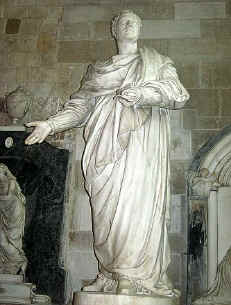 and "worthless" and invariably choosing the wrong one.
and "worthless" and invariably choosing the wrong one.
William Huskisson was laid to
rest in St. James' Cemetery which had opened the previous year. John
Foster Jr designed both the cemetery and Huskisson's neo-classical tomb and
Foster's gravestone lies immediately behind the monument, both of them in the
shadow of the Anglican Cathedral. There was a statue within the mausoleum,
of Huskisson in the stance of a senator cum Grecian orator which was sculpted by
John Gibson but sadly the statue was removed in the 1960's when vandalism
threatened its safety. A bronze replica of the original stood outside the
Custom House from 1847 until the building was struck by a bomb in the May blitz
nearly a century later. Relocated to Princes Avenue in 1954, the statue
was badly damaged during the Toxteth Riots and was taken to the Conservation
Centre for safety.
Huskisson was elected as member for Chichester in 1812 and a fine statue by
Carew has him once again depicted in the robes of a Roman senator. There's
also another memorial to Huskisson in Pimlico Gardens, London, by John Gibson
------ the statue is often mistaken for HHuskisson himself but is in fact a
roman senator standing guard over William Huskisson's tomb.
Joseph
Locke was severely shaken by the death of Huskisson and although today driving
the Rocket towards the halted train could be interpreted as lacking in judgement,
circumstances alter cases and his actions cannot be judged by today's
standards. Locke was acting under instruction, there were no safety
procedures in place and passengers and passers-by were allowed to wander freely
around the tracks.
Locke continued to work with the Stephensons and up until the 1840's was still
surveying railway routes throughout England, France and Holland. He
continued to drive trains into his old age and once drove Napoleon the Third
from London to Southampton and back again. In 1847,he was made MP for
Honiton in Devon and was acknowledged as one of the pioneers of the railways
although his reputation was always diminished by being in the shadow of the
Stephensons.
There was some irony attached to an accident he suffered in France in 1855, when
accompanied by Thomas Brassey on surveying work he suffered a double fracture to
his leg when a beam fell on him. The doctors advised amputation but Locke
refused preferring to limp for the rest of his days until his death in 1860.
Nothing could stop the railways after Stephenson had shown the way and rail
systems sprang up all over the country and then throughout the world. A
picture of the Lion painted in 1848 by Petrie even in that short time
illustrates the speed that trains were evolving. The Lion is sleeker and
faster than the Rocket and is the prototype of every steam engine that
followed. In the background is Edge Hill station which has also evolved
into a solid, Victorian version of everything that a railway station should be.

Sources; Charles R. Hand's History of Edge Hill, 1915
The last Journey of William Huskisson by Simon Garfield.



 htaking speed of 35 miles per hour { the House of Commons had
bargained that 10 mph might be reached } the floodgates opened and all the
latent ideas and ambitions that had been fermenting for many years came pouring
out and engineers and entrepreneurs everywhere were galvanized into an energetic
race to build the first rail system. William Huskisson was one of the prime
movers energized by the feats of the Rocket ----- the engine was a proven
winner and the next step was to build the track.
htaking speed of 35 miles per hour { the House of Commons had
bargained that 10 mph might be reached } the floodgates opened and all the
latent ideas and ambitions that had been fermenting for many years came pouring
out and engineers and entrepreneurs everywhere were galvanized into an energetic
race to build the first rail system. William Huskisson was one of the prime
movers energized by the feats of the Rocket ----- the engine was a proven
winner and the next step was to build the track. other VIP's
were in
the third carriage---- all of which was to be hauled by a single
locomotive, the Northumbrian, driven by George
Stephenson himself. The Duke's carriage was a grand affair;
other VIP's
were in
the third carriage---- all of which was to be hauled by a single
locomotive, the Northumbrian, driven by George
Stephenson himself. The Duke's carriage was a grand affair;  uch for the young lad and he lost his nerve.
Stephenson stepped in at this stage and ensured that Entwistle was found a new
placing as Second Engineer on one his firm's coastal steamers where the young man
finished his 7 year apprenticeship and recovered his health.
uch for the young lad and he lost his nerve.
Stephenson stepped in at this stage and ensured that Entwistle was found a new
placing as Second Engineer on one his firm's coastal steamers where the young man
finished his 7 year apprenticeship and recovered his health. is
open to conjecture and although there are anomalies in the Albion's account it
is true to say that there is also one in the Entwistle story ----the Rocket was
not built in the foundries of the Bridgewater Trust but in Stephenson's
workshops in Newcastle-on-Tyne. However, the writer is obviously not a
professional historian so that doesn't mean to say that the whole thing is a
fabrication ---in fact there would seem to be little point in constructing such
an elaborate falsehood which was not written for publication anyway.
and "worthless" and invariably choosing the wrong one.